Water issues have been identified as one of the most serious sustainability challenges facing the planet, partly due to the impacts of climate change, as well as increasing population, urbanization and pollution will put even greater pressure on this limited resource going forward.
Water scarcity is both a natural and a human-made phenomenon. Taken as a whole, there is enough freshwater for the world’s population but it is distributed unevenly and too much of it is wasted, polluted and unsustainably managed.
1. What is Sappi’s approach to water?
Forestry, as well as pulp and paper operations are highly dependent on the use and responsible management of water resources. Recognising the pressure on a finite resource that is core to our processes, we focus on identifying opportunities to save water throughout our pulp- and paper-making production process, recycling extensively within these processes and improving the quality of the waste water (effluent) we discharge. Below we set out the steps we take to achieve this.
2. How do our forestry operations use water?
In our plantations, we apply best practice management techniques to produce woodfibre with properties that allow it to be pulped using less energy and water. There are two key issues regarding water use in our plantations in South Africa: water quality and water quantity.
3. How does Sappi Manage Water Quality?
- Regulating drainage and minimising erosion, thereby preventing run-off into streams and rivers.
- Planning and constructing roads to prevent erosion and ensure water runoff is not directed straight into rivers.
- Ensuring runoff after harvesting is kept to a minimum, including leaving harvesting residue on the ground and ensuring that the correct harvesting and extraction methods are used.
- Using fertiliser only once in each rotation (fertiliser reaches water sources by means of runoff).
- Using short-lived pesticides that have little or no impact on downstream ecosystems.
4. Water Quantities
- Our plantations require no irrigation at all, but use rainwater and groundwater.
- Planting trees too close to water can reduce stream flow. We mitigate this risk delineating riparian zones and wetlands and ensuring these are kept free of commercial trees.
5. How do Sappi's manufacturing operations use water?
Water is used in all major process stages, including raw materials preparation (wood chip washing), pulp cooking, washing and screening, and paper machines (pulp slurry dilution and fabric showers). Water is also used for process cooling, materials transport, equipment cleaning, general facilities operations, and to generate steam for use in processes and on-site power generation and various other purposes.

6. Where does the water for Sappi's pulp and paper manufacturing processes come from?
Most of the water used in our operations is drawn from surface water in the form of lakes and rivers, with small amounts of groundwater and municipal water used. [Surface water sources include streams, rivers, lakes and reservoirs. By contrast, groundwater is the water found underground in the cracks and spaces in soil, sand and rock. It is stored in and moves slowly through geologic formations of soil, sand and rocks called aquifers.]
7. Is Sappi's water withdrawal and discharge regulated?
All our mills use and treat water in accordance with comprehensive environmental permits. Water management is included in our operational environmental management plans, which are reviewed and updated annually.
8. Do harvested trees contain water and if so, is it used in the manufacturing process?
Yes. About 50% of a tree is water, which is used in the manufacturing process
9. How is water reused by Sappi?
Water is recycled and reused up to ten times throughout the mill and requires different levels of treatment depending on its use. For example, water used in the steam systems (boiler feedwater) must be purified to minimise corrosion. Once steam is condensed it is recaptured and reused in the steam system. By contrast, raw water can be used without any treatment for non-contact cooling systems and can be returned directly to the river as long as it is not too warm.
10. Does evaporation play a role?
Throughout the process, especially on the paper machines and cooling towers, water is converted to water vapour and is emitted from the process. These vaporized sources re-enter the atmosphere and ultimately will end up as precipitation in the local ecosystem.
11. How is waste water treated?
Most of the water used in the pulp and papermaking process requires treatment prior to discharge to any receiving waters. Solid materials collected in the various treatment stages are dewatered and used as a fuel for energy production. Converting waste to energy also reduces the volume of organic materials sent to landfill. At our mills, once the water is used, reused and treated, it is returned to surface water sources. In fact, over 90% of the water intake is returned.
12. Can Sappi return more water to the environment?
The amount of water we return to the environment is consistent with industry benchmarks. The nature of the pulp and papermaking process means that we cannot significantly improve on this figure without the introduction of new-to-the-world technology.
13. Does Sappi use closed-loop water systems?
Water used for pulp and paper production is mostly circulated in the system. A fully closed water system is possible in theory, but usually not the option with the lowest impact. The best option is usually some make up water which in turn requires an outlet that is treated in simple or multiple stage waste water treatment processes.
14. Why does Sappi use less water in Europe than in Southern Africa or North America?
Pulp production has a higher specific water need than the production of paper. We have fewer mills producing pulp in Europe than in Southern Africa or North America. Consequently, our water use is lower in Europe where the share of pulp production compared to total production is lower than in North America and South Africa.
15. Is water and waste water tested?
Pulp production has a higher specific water need than the production of paper. We have fewer mills producing pulp in Europe than in Southern Africa or North America. Consequently, our water use is lower in Europe where the share of pulp production compared to total production is lower than in North America and South Africa.
Yes. Water and waste water (effluent) testing is routinely conducted at all mill sites. We use temperature controls, oxygen level controls and other metrics to ensure that we comply with all relevant environmental regulations.
16. Why is bleaching necessary and what bleaching processes does Sappi use?
Bleaching is required for many papers as it enhances printability, allows for brighter reproduction and slows down the yellowing process. However, the use of elemental chlorine can generate chlorinated by-products in effluent and is thus often a cause for stakeholder concern. In North America, our mills use the elemental chlorine-free (ECF) bleaching process. In Europe, all our integrated pulp is totally chlorine-free (TCF). Market pulp is either ECF or TCF. Our mills in South Africa use ECF sequences that incorporate ozone and/or oxygen bleaching stages.
17. Is there a link between energy and water usage?
If the effluent is simply discharged (with appropriate treatment), then a huge amount of heat is lost. For this reason, one of the most effective ways of retaining heat in an operation, and hence using less energy (fuels) and thus generating less fossil greenhouse gas emissions (for the fuels that are fossil-based), is to maximise water recirculation and minimise effluent.
18. Now that Sappi is using more hardwood, won't this impact water sources?
Our expansion of dissolving pulp capacity at Ngodwana and Saiccor Mills in South Africa means that we are planting and using increasing amounts of hardwood (eucalyptus). Some stakeholders have expressed concern because the production of DP is based on hardwood (eucalyptus) which use more water when growing than softwood (pine). However, as the table below illustrates, eucalypts use far less water than most other commercial crops and also absorb significant amounts of carbon dioxide (CO2) in terms of water usage. The third column illustrates the fact that in terms of land area, eucalyptus trees absorb far more CO2 per cultivated hectare than other crops. This is advantageous because it helps to mitigate the effects of climate change.
A comparison of water usage and carbon absorption – rain-fed plant fibre in South Africa
Rain-fed plant fibre (i.e. not irrigated)
|
Ton water required for growth / ton CO2 absorbed |
Ton CO2 absorbed/ha/ annum |
South African eucalyptus fibre |
274 |
26.9 |
Cotton fibre |
4,866 |
2.5 |
Maize |
3,943 |
6.8 |
Wheat |
4,776 |
5.1 |
Sugar cane |
3,152 |
2.2 |
Russell M. Wise, Peter J. Dye, Mark B. Gush: A comparison of the biophysical and economic water-use efficiencies of indigenous and introduced forests in South Africa
19. Don't plantations in South Africa use disproportionate amounts of water?
Forestry plantations have both positive and negative impacts on the environment. One of the negative impacts is that they generally do use more water than the grasslands they generally replace. However, on a national scale the amount of water they generally use is relatively small – about 3% of available resources – but this varies considerably from place to place and during different times of the year. To put this into context, irrigated agriculture uses approximately 60% of South Africa’s available water resources.
Due to perceptions about forestry’s high use of water, serious restrictions on expansion have been put in place by government. We believe this is misguided, based on the following:
• As the only designated streamflow reduction activity, plantation forestry is not irrigated, but pays for the water it uses in what is essentially a ‘rain’ tax;
• Our trees are planted away from riparian zones, thereby decreasing the amount of water used;
• The quality of water emanating from afforested catchments is generally good and is much better than most other forms of agriculture; and
• Though difficult to calculate, the value added to the water we use compares very favourably with other forms of land use – especially because forestry uses land that has few other economic options for use.
Read through our case studies here to better understand water usage and it's impact in real-life situations.










